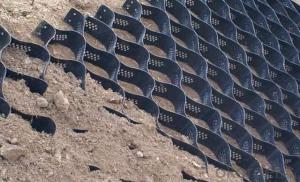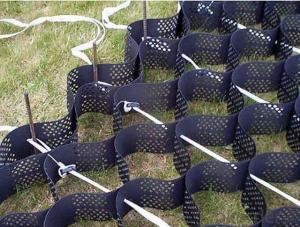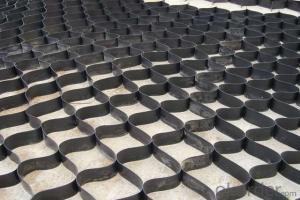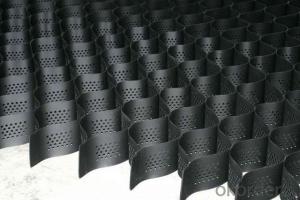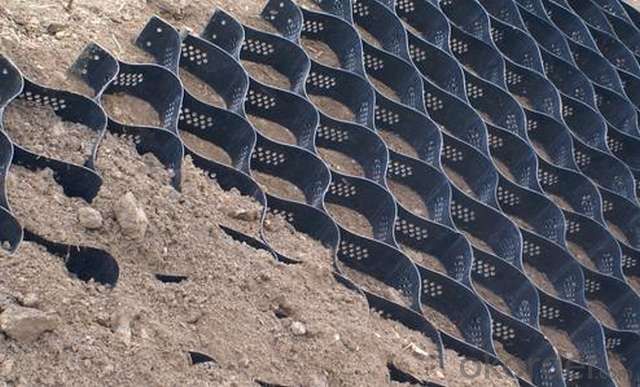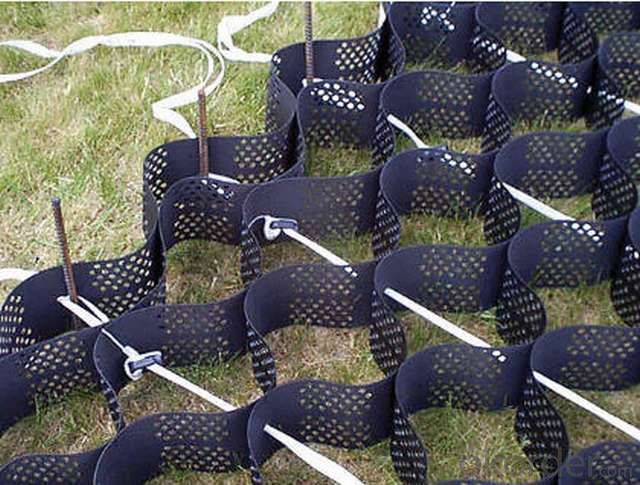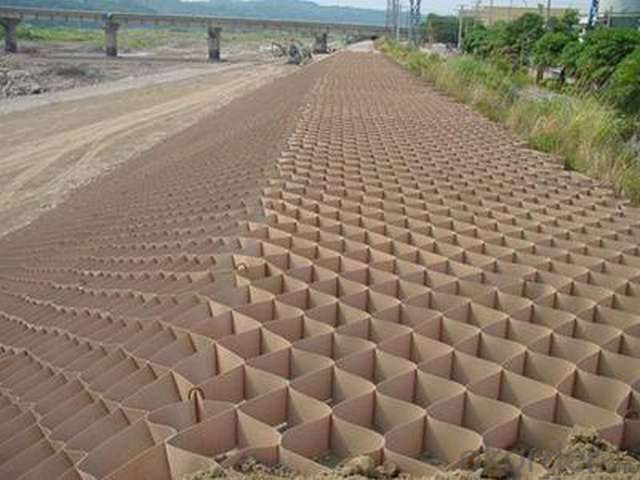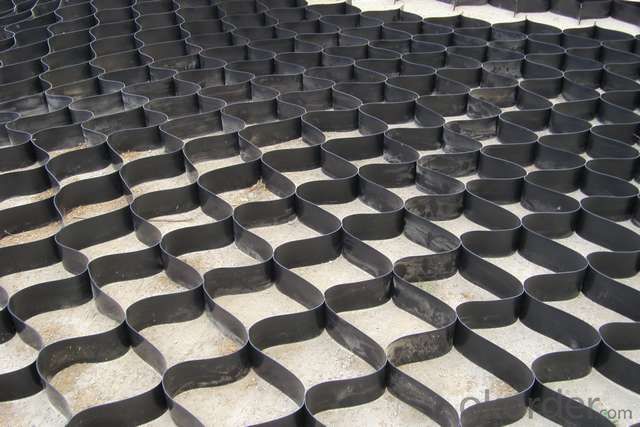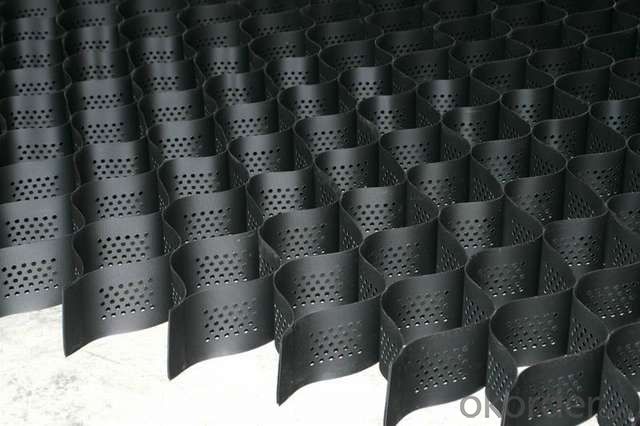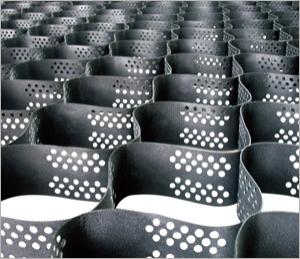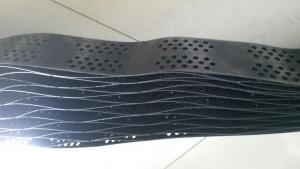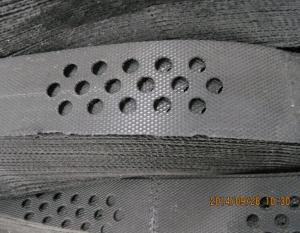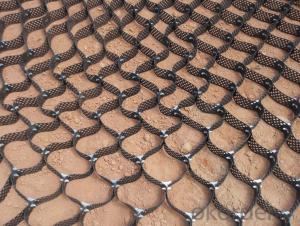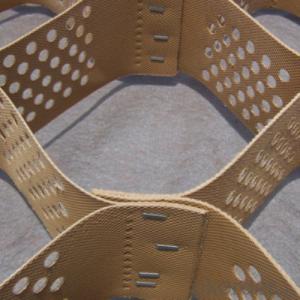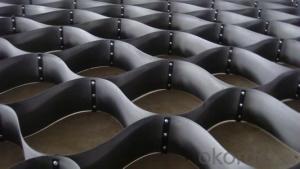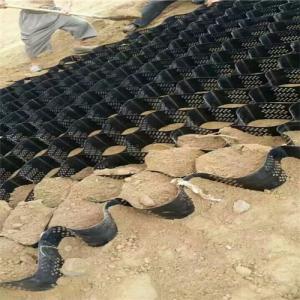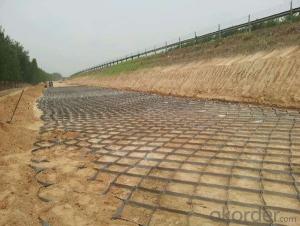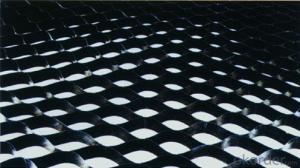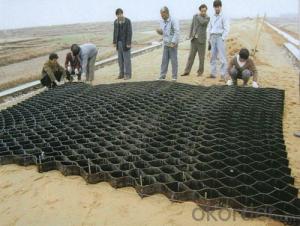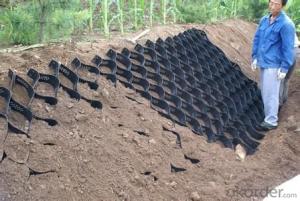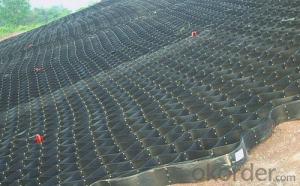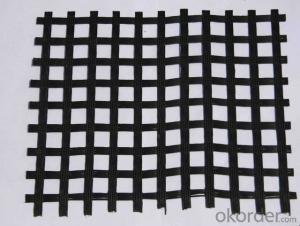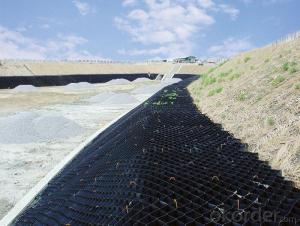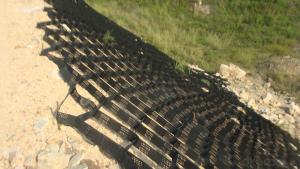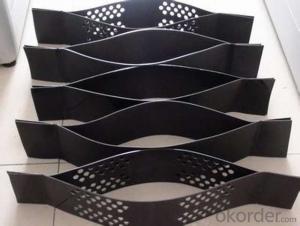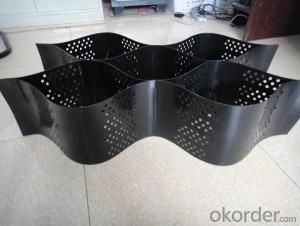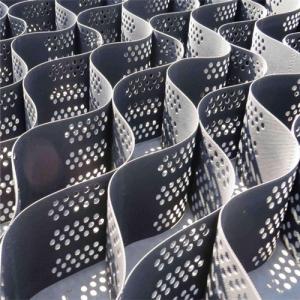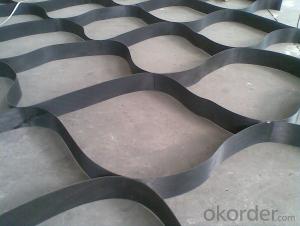HDPE Geocell for Roadbed, Slope,Construction
- Loading Port:
- Qingdao
- Payment Terms:
- TT or L/C
- Min Order Qty:
- 10000 m²
- Supply Capability:
- 450000 m²/month
OKorder Service Pledge
OKorder Financial Service
You Might Also Like
HDPE Geocell , Geocell is a net-shaped cell structure made by welding high intensity thermoplastic sheet. It is flexible: folded during transportation, stretching out and being filled with stone or concrete during service, and forming into struct with powerful lateral confinement and rigidity. It can be used as cushion coat to strengthen loading capacity of weak ground or slope protection structure, as well as stop structure, and so on.
Functions:
1. Fix railway ground.
2.Fix weak ground of roads.
3.Block loading capacity.
4.Treat river way of shallow water.
5.Act as support in pipeline and sewer.
6.Act as comprehensive block stopping land sliding and bearing loading capacity.
7.Act as independent wall, dock and break-water.
8.Treat desert, beach, riverbed and bank
Model | Expanded Size (m) | Height (mm) | Welding distance (mm) | Yield strength of cell (Mpa) | Seam Peel strength (N) | Thickness (Smooth or Textured) | Perforated percentage |
500/400 | 5.7X6.22 | 50 |
330
400
500 |
≥20 | ≥500 |
Smooth sheet: 1,1.2,1.5,2mm
Textured sheet: 1.2,1.7,2mm |
15%, 20%, 40% , 60%, 80% |
75/400 | 5.7X6.22 | 75 | ≥750 | ||||
100/400 | 5.7X6.22 | 100 | ≥1000 | ||||
150/400 | 5.7X6.22 | 150 | ≥1500 | ||||
200/400 | 5.7X6.22 | 200 | ≥2000 | ||||
240/400 | 5.7X6.22 | 240 | ≥2400 | ||||
Remarks: Welding distance can be made: 330mm, 400mm, and 500mm, with various mesh sizes. | |||||||
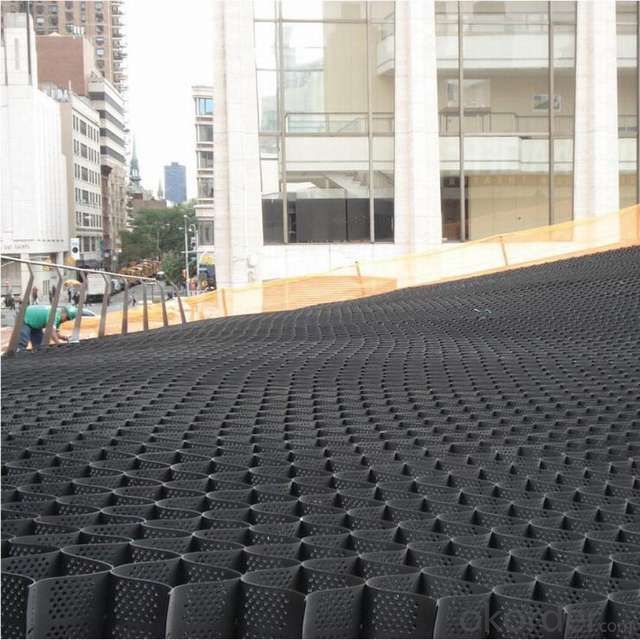
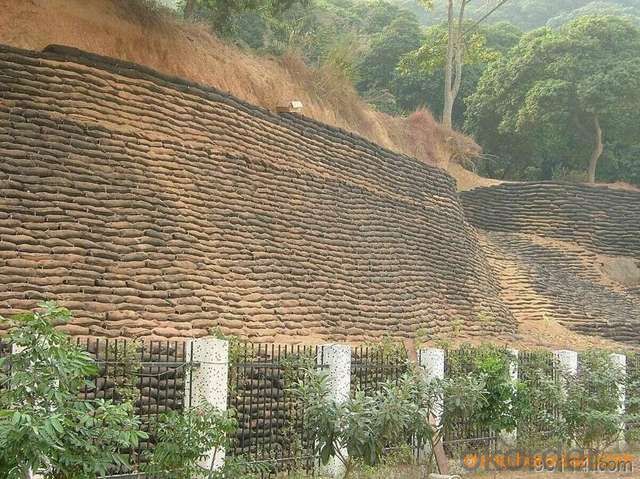
FQA:
- Q: What can we do for the special customer?
A: Provide custom made service with customer's drawing; We make sure to provide you with the best solutions for your individual case. Whether standard items or non-standard items.
- Q: What can we supply?
A: We provide high levels of communication from start to finish.
- Q: What is our advantage?
A: Top Cemented Carbide has extensive business experience, Fast delivery and high quality.
- Q: How do geocells enhance the load distribution of soils?
- Geocells enhance the load distribution of soils by confining and stabilizing the soil particles within their cell walls. This confinement increases the lateral spread of load, reducing vertical stress and preventing soil displacement. As a result, geocells promote better load distribution and improve the overall load-bearing capacity of the soil.
- Q: Can geocells be used for rooftop gardens?
- Yes, geocells can be used for rooftop gardens. Geocells provide a stable and secure base for rooftop gardens by preventing soil erosion and promoting proper drainage. They also help distribute the weight of the garden evenly, making it suitable for rooftop applications.
- Q: Can geocells be used in oil and gas pipeline construction?
- Yes, geocells can be used in oil and gas pipeline construction. Geocells are often used as a protective layer to prevent soil erosion and stabilize the ground. They can help to enhance the stability and load-bearing capacity of the pipeline corridor, prevent soil movement, and mitigate potential damage caused by external factors like heavy traffic or environmental conditions.
- Q: How do geocells improve the load-bearing capacity of soil?
- Geocells improve the load-bearing capacity of soil by confining and stabilizing the soil particles within their interconnected honeycomb-like structure. This confinement prevents lateral movement and displacement of soil particles, increasing their overall load-bearing capacity. Additionally, the geocells distribute the applied load more evenly, reducing stress concentrations and improving the overall stability and strength of the soil.
- Q: Can geocells be used for retaining walls?
- Yes, geocells can be used for retaining walls. Geocells are three-dimensional cellular confinement systems made from high-density polyethylene material. They can be filled with soil, gravel, or concrete to create a stable structure for retaining walls. The interconnected cells provide reinforcement and prevent soil erosion, making geocells an effective solution for retaining wall construction.
- Q: What is the lifespan of geocells?
- The lifespan of geocells can vary depending on various factors such as the quality of the materials used, the environmental conditions, and the level of maintenance. However, in general, geocells are designed to be durable and long-lasting, with an expected lifespan of 20 to 50 years or more.
- Q: Can geocells be used for slope greening?
- Yes, geocells can be used for slope greening. Geocells are three-dimensional cellular confinement systems that are filled with soil or vegetation. They provide structural support to steep slopes, preventing erosion and promoting vegetation growth. The cells can be filled with soil and then planted with grass or other vegetation to stabilize the slope and enhance its appearance.
- Q: Can geocells be used in erosion control for riverbanks?
- Yes, geocells can be used in erosion control for riverbanks. Geocells are three-dimensional cellular structures made from high-density polyethylene (HDPE) materials that can be filled with soil, aggregate, or other materials. When installed along the riverbank, geocells provide a stable framework that helps prevent soil erosion and retain the bank's integrity. The interconnected cells also allow for proper drainage and vegetation growth, further enhancing erosion control measures.
- Q: Can geocells be used in sound barrier construction?
- Yes, geocells can be used in sound barrier construction. Geocells are versatile and durable cellular confinement systems that can be filled with a variety of materials such as soil, gravel, or concrete. These materials help absorb and block sound waves, making geocells an effective solution for constructing sound barriers. Additionally, geocells provide stability and reinforcement to the structure, enhancing its overall performance and longevity.
- Q: Can geocells be used in pipeline protection?
- Yes, geocells can be used in pipeline protection. Geocells are three-dimensional cellular confinement systems that can provide a stable and protective layer around pipelines. They offer excellent load distribution, erosion control, and soil stabilization capabilities, making them ideal for protecting pipelines from external forces and potential damage.
1. Manufacturer Overview
| Location | Taian City,Shandong Province,China |
| Year Established | 2003 |
| Annual Output Value | Above US$100 Million |
| Main Markets | Africa, North America, Eastern Europe, South Asia, Western Europe |
| Company Certifications | ISO9001;IS014001 Certificate |
2. Manufacturer Certificates
| a) Certification Name | |
| Range | |
| Reference | |
| Validity Period |
3. Manufacturer Capability
| a) Trade Capacity | |
| Nearest Port | Qingdao Port;Tianjing Port;Shanghai Port |
| Export Percentage | |
| No.of Employees in Trade Department | 21-30 People |
| Language Spoken: | English; Chinese; |
| b) Factory Information | |
| Factory Size: | 10,000-30,000 square meters |
| No. of Production Lines | Above 10 |
| Contract Manufacturing | Geotechnical Material (Geogrid,Fiberglass/Polyester Geogrid;Geocell;Geonet and Geomat;Plastic Safety Fence);Plastics products;Rubber products;Geotextile;Carpet;Compound geomembrane |
| Product Price Range | Average |
Send your message to us
HDPE Geocell for Roadbed, Slope,Construction
- Loading Port:
- Qingdao
- Payment Terms:
- TT or L/C
- Min Order Qty:
- 10000 m²
- Supply Capability:
- 450000 m²/month
OKorder Service Pledge
OKorder Financial Service
Similar products
Hot products
Hot Searches
Related keywords
